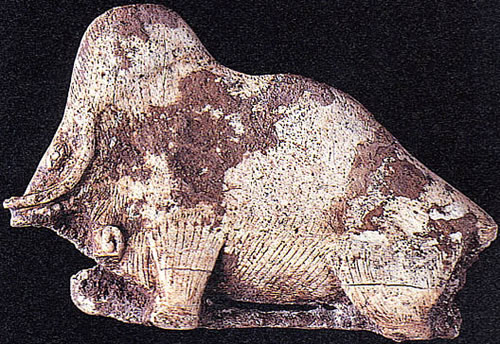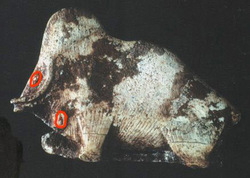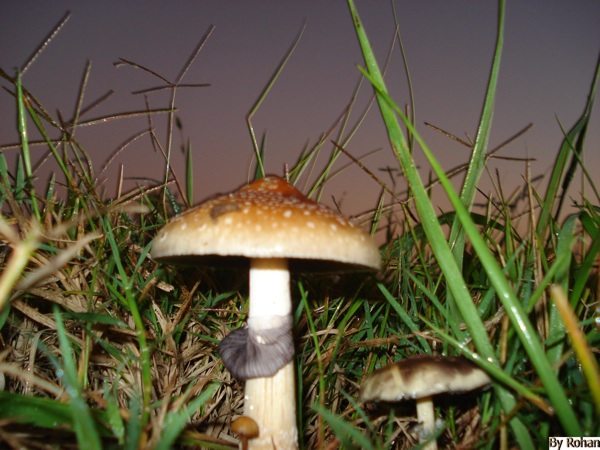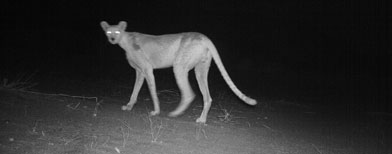The Daily Drift
Today's horoscope says:If you're feeling pressure to pony up for extravagant gifts, your economical side is likely to rebel.
Sure, lovely things are lovely to give, but practicality is your stock and trade.
And if you apply your surprising creative side to it, you can find something practical and perfect that'll really please.
Who doesn't like a pair of fuzzy slippers, a wonderful book or a certificate for a homemade meal made with love?
Some of our readers today have been in:
Ho Chi Minh City, Ho Chi Minh, Vietnam
Perth, Western Australia, Australia
Petaling Jaya, Selangor, Malaysia
Montreal, Quebec, Canada
Melbourne, Victoria, Australia
Rome, Lazio, Italy
Paris, Ile-De-France, France
Ramat Hasharon, Tel Aviv, Israel
Zurich, Zurich, Switzerland
Moscow, Moskva, Russia
Dortmund, Nordrhein-Westfalen, Germany
Sittard, Limburg, Netherlands
Turku, Western Finland, Finland
Reutlingen, Baden-Wurttemburg, Germany
Santander, Cantabria, Spain
Edithvale, Victoria, Australia
as well as Bulgaria, Israel, Finland, Austria, Norway, Georgia, Mexico, Peru, Kuwait, Serbia, Bangladesh, Latvia, Greece, Scotland, Hong Kong, Denmark, Wales, Iran, Singapore, Poland, Taiwan, Sweden, Afghanistan, Belgium, Tibet, Croatia, Pakistan, Romania, Paraguay, Sudan, Vietnam, Argentina, Cambodia, Egypt, France, Estonia, Puerto Rico, Qatar, Brazil, New Zealand, United Arab Emirates, Slovenia, China, Iraq, Ecuador, Nigeria, Colombia, Chile, Honduras, Paupa New Guinea, Moldova, Venezuela, Germany, Mexico, Saudi Arabia, Ireland, New Zealand, Czech Republic and in cities across the United States such as Aurora, Chicago, Springfield, Wheaton and more.
Today is:
Today is Friday, December 24, the 358th day of 2010.
There are 7 days left in the year.
Today's unusual holiday or celebration is:
There isn't one.
Don't forget to visit our sister blog!





 Perhaps the most dramatic candidate for a mammoth-bison image meeting this requirement and being an intentional illusion isn’t on a cave wall, but on a carving from a spear-thrower from the site of Canecaude. In this piece, as Caldwell sees it, it’s not that the animals share a contour or a few lines, but that just two small details allow the entire image to be read as either of the two species, and seeing one causes the other to "disappear."
Perhaps the most dramatic candidate for a mammoth-bison image meeting this requirement and being an intentional illusion isn’t on a cave wall, but on a carving from a spear-thrower from the site of Canecaude. In this piece, as Caldwell sees it, it’s not that the animals share a contour or a few lines, but that just two small details allow the entire image to be read as either of the two species, and seeing one causes the other to "disappear."  Archaeologists find them; linguists try to read them, but even after years of study, some writings are indecipherable. Some are from unknown languages, others were written in code. All are baffling.
Archaeologists find them; linguists try to read them, but even after years of study, some writings are indecipherable. Some are from unknown languages, others were written in code. All are baffling.


 Earth is a blue planet that has red sunsets. Mars is a red planet with blue sunsets!
Earth is a blue planet that has red sunsets. Mars is a red planet with blue sunsets!



 U.S. authorities are warning air travelers to expect greater scrutiny of thermoses and other insulated drink containers at security checkpoints after intelligence suggested they could be used to hide explosives.
U.S. authorities are warning air travelers to expect greater scrutiny of thermoses and other insulated drink containers at security checkpoints after intelligence suggested they could be used to hide explosives.


 Pam Fleming, a police officer in Glasgow, UK, is a Jedi. She’s one of eight Jedi officers on the force, and she claims that she uses her supernatural abilities while at work:
Pam Fleming, a police officer in Glasgow, UK, is a Jedi. She’s one of eight Jedi officers on the force, and she claims that she uses her supernatural abilities while at work:
 Lankford's forthcoming study, to be published early next year, is "far more robust" than his first: a list of more than 75 suicide terrorists and why they were likely suicidal. He cites a Palestinian woman who, five months after lighting herself on fire in her parents' kitchen, attempted a return to the hospital that saved her life. But this time she approached with a pack of bombs wrapped around her body, working as an "ideologue" in the service of the al-Aqsa Martyrs Brigade. Lankford writes of al Qaeda-backed terrorists in Iraq who would target and rape local women, and then see to it that the victims were sent to Samira Ahmed Jassim. Jassim would convince these traumatized women that the only way to escape public scorn was martyrdom. She was so successful she became known as the Mother of Believers. "If you just needed true believers, you wouldn't need them to be raped first," Lankford said in an interview.
Lankford's forthcoming study, to be published early next year, is "far more robust" than his first: a list of more than 75 suicide terrorists and why they were likely suicidal. He cites a Palestinian woman who, five months after lighting herself on fire in her parents' kitchen, attempted a return to the hospital that saved her life. But this time she approached with a pack of bombs wrapped around her body, working as an "ideologue" in the service of the al-Aqsa Martyrs Brigade. Lankford writes of al Qaeda-backed terrorists in Iraq who would target and rape local women, and then see to it that the victims were sent to Samira Ahmed Jassim. Jassim would convince these traumatized women that the only way to escape public scorn was martyrdom. She was so successful she became known as the Mother of Believers. "If you just needed true believers, you wouldn't need them to be raped first," Lankford said in an interview. 



















 Why do girls play with dolls and boys with cars (much to the consternation of feminists everywhere)? The answer may be rooted deep in evolution: scientists observed that female chimpanzee youngsters in the wild play with sticks as dolls:
Why do girls play with dolls and boys with cars (much to the consternation of feminists everywhere)? The answer may be rooted deep in evolution: scientists observed that female chimpanzee youngsters in the wild play with sticks as dolls: Reindeer tripping on shrooms? Drunk finches and starlings? Goats on speed? Jaguars on yage? In the Pharmaceutical Journal Online, Andrew Haynes presents a fascinating look at animal drug use. Apparently, the animals may have been the ones to turned us on to various recreational drugs.
Reindeer tripping on shrooms? Drunk finches and starlings? Goats on speed? Jaguars on yage? In the Pharmaceutical Journal Online, Andrew Haynes presents a fascinating look at animal drug use. Apparently, the animals may have been the ones to turned us on to various recreational drugs.

